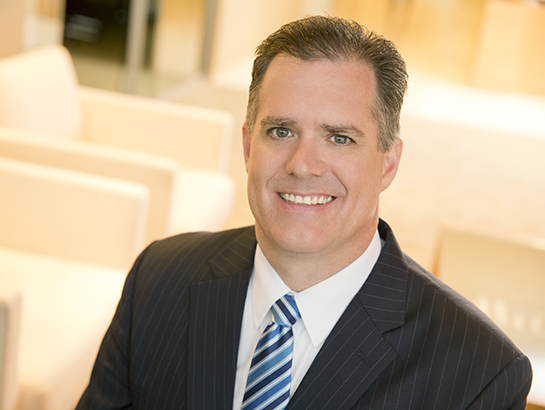(Last updated April 3, 2020)
On Thursday evening, April 2, 2020, the night before SBA Lenders were supposed to start accepting loan applications under the Paycheck Protection Program (PPP) enacted by the CARES Act signed into law on March 27, 2020 by President Trump, the SBA finally issued its Interim Final Rule providing much-needed guidance to prospective PPP borrowers and lenders (the link to the Interim Final Rule can be found here).
While much of the PPP terms have remained the same, the SBA did make some changes and has made some other interpretations that are a bit different than originally understood.
Notable Changes and Insights:
The interest rate to be charged on PPP loans has increased from the 0.5% per annum previously issued by the U.S. Department of the Treasury to 1.0% per annum. The maturity date for PPP loans will still be 2 years as the considerable economic disruption by the coronavirus is expected to abate well before the two-year maturity date.
The SBA has clarified that businesses may not include independent contractors who work for them in the payroll cost numbers submitted in the loan applications nor in their forgiveness calculations. The SBA states that this is because the independent contractors can submit for their own individual PPP loans. Please note that this seemingly conflicts with one of the PPP loan application form certifications which states “(t)he applicant was in operation on February 15, 2020 and had employees for whom it paid salaries and payroll taxes or paid independent contractors, as reported on a Form 1099-MISC.” This discrepancy seems to hint that this may not be the last word on this issue.
The Interim Final Rule will be effective immediately without regard to the usual advance notice and public comment periods. Any comments that are received will be considered in connection with any potential revisions to the rule.
PPP lenders will not be required to comply with the SBA lending criteria set forth in 13 CFR 120.150. Instead, lenders are authorized to rely on certifications of the borrower in order to determine eligibility of the borrower and use of loan proceeds and to rely on specified documents provided by the borrower to determine qualifying loan amount and eligibility for loan forgiveness. The PPP program requirements as set forth in the Interim Final Rule temporarily supersede any conflicting Loan Program Requirement (as defined in 13 CFR 120.10).
Lenders will be held harmless by the SBA for a borrower’s failure to comply with program criteria.
The Interim Final Rule states that the “SBA intends to promptly issue additional guidance with regard to the applicability of affiliation rules at 13 CFR §§ 121.103 and 121.301 to PPP loans.” Stay tuned on this point if your intended borrower has one or more affiliates.
Ineligibility Standards were clarified, namely that you are ineligible for a PPP loan if:
(1) You are engaged in any activity that is illegal under federal, state, or local law;
(2) You are a household employer (individuals who employ household employees such as nannies or housekeepers);
(3) An owner of 20 percent or more of the equity of applicant is incarcerated, on probation, on parole; presently subject to an indictment, criminal information, arraignment, or other means by which formal criminal charges are brought in any jurisdiction; or has been convicted of a felony within the last five years; or
(4) You, or any business owned or controlled by you or any of your owners, have ever obtained a direct or guaranteed loan from the SBA or any other Federal agency that is currently delinquent or has defaulted within the last seven years and caused a loss to the government.
The methodology (together with examples) for calculating the maximum amount that can be borrowed is provided in the Interim Final Rule.
The following items are not includable in the definition of “payroll costs”:
(1) Any compensation of an employee whose principal place of business is outside of the United States;
(2) The compensation of any individual employee in excess of an annual salary of $100,000, prorated as necessary;
(3) Federal employment taxes imposed or withheld between February 15, 2020 and June 30, 2020, including the employees’ and employer’s share of FICA and income taxes required to be withheld from employees; and
(4) Qualified sick and family leave wages for which a credit is allowed under Sections 7001 and 7003 of the Families First Coronavirus Response Act (Public Law 116-127).
E-signatures and e-consents are permitted.
The Interim Final Rule clarifies that the amount of loan forgiveness can be up to the full principal amount and any accrued interest, meaning that the borrower will not have to pay anything back if the borrower uses all of the loan proceeds for forgivable purposes within the requisite 8 week period (assuming employee and compensation levels are maintained).
No more than 25% of the PPP loan forgiveness amount may be for non-payroll costs.
To apply, an applicant must submit SBA Form 2483 (Paycheck Protection Program Application Form) and required payroll documentation.
What happens if PPP loan funds are misused? The SBA will direct you to repay those amounts. If the misuse is knowingly done, you will be subject to additional liability such as charges for fraud. Personal liability against shareholders, members, or partners who misuse funds is possible.
Underwriting requirements for PPP loans are spelled out in the Interim Final Rule as is the process for how agents assisting borrowers are to be paid by the PPP lenders.
PPP Loans may be sold on the secondary market after the loan is fully disbursed.
For a complete understanding of what is set forth in the Interim Final Rule, we recommend that the rule (linked above) be reviewed directly.
NOTE: As the SBA has confirmed that the PPP loans will be issued on a “first come, first served” basis, we strongly recommend that qualifying applicants submit their applications as soon as possible.
